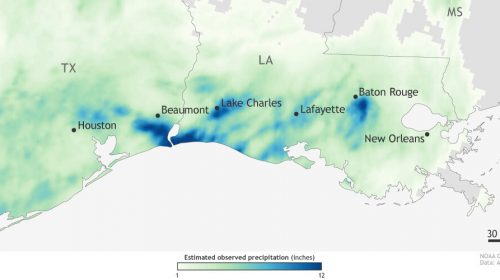Nitrogen makes up 78 percent of our atmosphere and is essential to life on Earth. Still, nitrogen pollution can impact air quality when compounds like ammonia and nitrous oxide become too abundant. Nitrogen can transform in the atmosphere through a process known as nitrogen partitioning. This process determines whether nitrogen stays in its gaseous form or turns into harmful particulate matter or ozone. Understanding this transformation is key to predicting and managing pollution. Two recent studies supported by the Climate Program Office’s Atmospheric Chemistry, Carbon Cycle and Climate (AC4) program investigated animal feeding operations and wildfires as major sources of nitrogen pollution in the U.S.
A recent JGR Atmospheres study in Colorado found that ammonia released from animal feeding operations does not significantly contribute to particulate matter pollution in summer. Hot temperatures keep the ammonia in its gaseous form and prevent ammonium nitrate particles from forming. The results suggest colder months could see worsened pollution. This work contributes to an AC4 initiative to understand relationships between emissions, air quality, and heat. Meanwhile, a Geophysical Research Letters study examined Canadian wildfire smoke that was measured in the AC4-supported campaign WE-CAN (Western Wildfire Experiment for Cloud Chemistry, Aerosol Absorption and Nitrogen 2018). The authors show that smoke carries nitrogen compounds that break down as the plumes travel south and encounter warmer temperatures, boosting ozone levels in U.S. cities like Denver and Salt Lake City. Together, these findings show how temperature and nitrogen partitioning are crucial in predicting air pollution from different sources.
For more information, contact Clara Deck.










